EXHIBIT I Transportation Assess ment
APPLICATION TO THE OHIO POWER SITING BOARD FOR A
CERTIFICATE OF ENVIRONMENTAL COMPATIBILITY AND PUBLIC NEED FOR THE GRANGE SOLAR
GRAZING CENTER
Case No. 24-0801-EL -BGN


APPLICATION TO THE OHIO POWER SITING BOARD FOR A
CERTIFICATE OF ENVIRONMENTAL COMPATIBILITY AND PUBLIC NEED FOR THE GRANGE SOLAR
Case No. 24-0801-EL -BGN

Grange Solar Grazing Center
Logan County, Ohio
Prepared for:
Grange Solar, LLC
315 E. Main Street
Russells Point, Ohio 43348
Prepared by:
Verdantas
6397 Emerald Parkway, Suite 200 Dublin, Ohio 43016 614-793-8777
Verdantas Project No: 15770
September 2024


This Transportation Assessment has been prepared for the Grange Solar Grazing Center. The Grange Solar Grazing Center is a combined utility-scale solar energy facility and sheep grazing operation being developed in Logan County, Ohio (the “Project” or the “Facility”). The Project will use rows of ground-mounted solar panels to supply wholesale power to the existing electric grid while also providing pasture for livestock. All of the Project’s above-ground structures will sit within vegetated fields enclosed within agricultural-style fences, which also will confine the livestock and protect them from predators. The combined area of the fenced fields will be about 2,600 acres. within a total, combined area of approximately 4,100 acres (the “Study Area”). A Project Map and Vicinity Map is included in Appendix A.
The objective of this assessment is to support an application to the Ohio Power Siting Board (OPSB) for a Certification of Environmental Compatibility and Public Need (Certificate Application), as codified in Ohio Administrative Code (OAC) 4906, which is required by:
1. OAC 4906-4-06(E)(3) to include an evaluation and description of the anticipated impact to roads and bridges associated with construction vehicles and equipment delivery.
2. OAC 4906-4-06(E)(4): A list of all transportation permits required for construction and operation of the project and describe any necessary coordination with appropriate authorities for temporary or permanent road closures, lane closures, road access restrictions, and traffic control necessary for construction and operation of the proposed facility.
After the project receives a Certificate from OPSB and final design is completed, a Final Transportation Plan is expected to be prepared that includes the selected haul routes, driveway permits, road use and maintenance agreements, temporary road closures, and traffic control necessary for construction and operation. The Final Transportation Plan is expected to be submitted to OPSB for review prior to the Preconstruction Conference.
The solar panels will be located in groups at various locations in the Study Area and access to the proposed solar panels for construction and operation will be from federal, State, county, and township roads. Construction of the Facility will cause temporary increases in truck traffic on area roadways due to the delivery of materials and equipment.
This evaluation identifies the probable public routes that can be used to construct and operate the Facility. It is assumed that vehicle traffic will originate from an Interstate or four-lane divided State highway. From these routes, two-lane State highways would be used to travel to the Study Area. State, county, and township roads will be used to access private leased parcels that make up the Study Area

For purposes of this evaluation, Interstate, four-lane, and two-lane State highways were not evaluated because it is assumed that these roadways are sufficient to accommodate the construction and operational traffic with respect to load capacity, geometry, and condition.
For the county and township roads, this evaluation includes a desktop study and on-site visual assessment of the probable routes, bridges, and culverts in the Study Area. This evaluation includes the general condition based on visual assessment of culverts and bridges, general pavement conditions, vertical changes in grade, and overhead height obstructions. This evaluation identifies locations where improvements to the road are likely needed to accommodate the size of the delivery and construction vehicles.
Research for state permits that are necessary for hauling the materials and equipment is also included in the evaluation. Photographs were collected from all the reviewed probable routes of select features noted during the evaluation.
The types of vehicles needed to deliver construction equipment, construction materials, and Facility components include flatbed or tractor-trailer equipment delivery vehicles and multi-axle dump trucks. In addition, typical automobiles and pickup trucks are likely to be used to transport construction staff and other incidental truck trips.
Transportation of construction equipment and materials and Facility components are expected to be completed using conventional transportation vehicles such as fixed-bed trucks or tractor-semitrailers (AASHTO WB-67). Construction equipment such as excavators, bull dozers, and wheel tractor-scrapers are expected to be transported to the site on fixed-bed or tractor-semi-trailer lowboy vehicles. Multi-axle dump trucks may also be used. The vast majority of the vehicles are expected to be of legal weight and dimensions. Some limited components, such as switchgear or transformers for switchyards and substations, may require the use of overweight/oversize vehicles. More specific information regarding vehicle characteristics is expected to be provided in the Final Transportation Plan.

An evaluation and visual assessment of the probable routes was conducted from December 4th through December 8th, 2023, by traveling the roadways listed below (see Figure 1 in Appendix A for the location of probable routes). Existing data on traffic volumes for the probable routes were obtained from the Ohio Department of Transportation (ODOT) Traffic Monitoring Management System (TMMS)1, if available. Annual Average Daily Traffic (AADT) data obtained from the ODOT TMMS are shown in Table 1. Based on field observations, we do not expect the Project to create any significant delays for the traveling public. Table 1 summarizes the existing conditions of the roadways.

Notes:
- AADT – Annual Average Daily Traffic
- NP – Not Posted; (55 mph per Ohio State Law)
- N/A – Not Available
- Lanes are assumed to be a minimum of 8.5 feet wide
- CR-21, CR-35, CR-60, CR-53 (north of SR-274) CR-54, are maintained by Logan County
- TWP-94 is maintained by Washington Township
- TWP-52 and TWP-240 are maintained by Stokes Township
- TWP-80 and TWP-53 (south of SR-274) are maintained by Bloomfield Township
- TWP-95 is maintained by McArthur Township
Pavement Condition:
• Excellent – recently paved.
• Good – pavement appears stable with minor cracking and other pavement distress indicators.
• Fair – pavement appears stable but may have a higher amount of transverse and longitudinal cracking and other distressed pavement indicators such as edge cracking, rutting, and weathering. Potholes may be present.
• Poor – pavement is severely distressed with excessive cracks, potholes, rutting, and deterioration.
Summary
All roads are suitable for equipment delivery and construction traffic in their current condition. Example photos of the roads that were evaluated are included in Appendix B. The locations of the photos are shown on Figure 1 in Appendix A.
1. The Bridge on TWP-94 is a single-span bridge resting on concrete abutments. The deck has been paved over with concrete and is in good condition. The concrete is in good condition. The abutments appeared to be in good condition. The guardrails are in good condition with minor rust.
The Logan County Engineer’s Office2 , Washington Township Trustees3 , Stokes Township Trustees4, and Bloomfield Township Trustees5 were contacted in January 2024 to determine if there were any restrictions on roadways, bridges, or culverts on the probable routes that were evaluated. They were also contacted to provide information regarding any planned construction projects on the probable routes within the next two years. The Logan County Engineer’s Office was contacted again in August 2024 for further information.
The following information was provided by the Logan County Engineer’s Office
1. The County is currently in the process of finalizing its 2024 road resurfacing programs and bridge programs, and it will be available soon and will be included
2 Scott Coleman, Logan County Engineer’s Office on January 8, 2024. Follow-up on August 7, 2024.
3 Tucker Berg, Washington Township Trustees on January 8, 2024.
4 Tim Hart, Stokes Township Trustees on January 8, 2024.
5 Kelly Copeland, Bloomfield Township Trustees on January 8, 2024.

in its annual report on April 1, 2024. The County does not have a completed plan for 2025.
2. Logan County does not have any official seasonal/spring frost load restrictions in place. Roadway load limit restrictions are based solely on current posted limits.
3. Logan County requested that access to the Study Area via county and township roads be minimized to the extent practicable
The following information was provided by the office of the Washington Township Trustees:
1. There are currently no roadway construction projects scheduled within the next two years.
The following information was provided by the office of the Stokes Township Trustees:
1. Any spring frost restrictions would be set by the Logan County Engineer’s Office.
2. There are currently no roadway construction projects scheduled within the next two years.
The following information was provided by the office of the Bloomfield Township Trustees:
1. There are currently no roadway construction projects scheduled within the next two years.
Culverts (where visible) were visually examined to determine their condition and if adequate cover is present. For purposes of this evaluation, adequate cover means there is more than one foot of cover over the culvert (inclusive of the pavement). The condition of the culvert was limited to a visual review to determine if there is distortion in the shape (e.g., out of round) or evidence of corrosion (for steel culverts). Evidence of the condition of concrete culverts is limited to cracking or surface spalling. The order in which culverts are described below align with their order presented along the road within the photo pages of Appendix B. Four different culvert types were observed on these routes, corrugated metal pipe (CMP), high density polyethylene (HDPE), reinforced concrete pipe (RCP), and concrete box culvert.

TWP-95
HDPE Fair Adequate Stable Good
RCP Good Adequate Stable Good
TWP-94
HDPE Good Adequate Stable Good Inlet is a Catch Basin
HDPE Good Adequate Stable Good
CMP Good Adequate Stable Good
CMP Good Adequate Stable Good
Unknown Good Adequate Stable Good
TWP-52
HDPE Good Adequate Stable Good
Dual HDPE Good Adequate Stable Good Pavement was patched
TWP-240
HDPE Good Adequate Stable Good
HDPE Good Adequate Stable Good Pavement was patched
HDPE Good Adequate Stable Good
CMP Good Adequate Stable Good Pavement was patched
CR-54
HDPE Good Adequate Stable Good
HDPE Good Adequate Stable Good
CMP Good Adequate Stable Good Pavement was patched
RCP Fair Adequate Stable Good Pavement was patched, Inlet side was plugged with debris
CR-21
HDPE Good Adequate Stable Good

HDPE Good Adequate Stable Good
HDPE Good Adequate Stable Good
HDPE Good Adequate Stable Good
CMP Fair Adequate Stable Good Pavement was patched, outlet was damaged
RCP Fair Adequate Stable Good Pavement was patched, Inlet side was plugged with debris
TWP-80
RCP Fair Adequate Stable Good Pavement was patched
TWP-53
CMP Good Adequate Stable Good
CMP Fair Not Adequate Stable Good CR-35
HDPE Good Adequate Stable Good Pavement was patched
HDPE Good Adequate Stable Good Pavement was patched
Steel Good Adequate Stable Good Pavement was patched
Steel Fair Adequate Stable Good Pavement was patched
CR-53 (no culverts observed)
CR-60 (no culverts observed)
The roads were investigated for width and height limitations. Permanent structures that cross over the road and restrict the clearance for oversized loads (such as bridges and overpasses) were not found along the evaluated routes. The national standard for minimum clearance over roads is 15.5 feet for overhead cables, and cables cross over the studied routes in numerous locations. The height of overhead cables was not measured; however, no cables appeared to be potentially vertically obstructive. In the event a cable presents an obstruction, utility providers can temporarily or permanently raise the cables and/or move the poles. Therefore, cables should not be a limiting feature for use of the roads.

There were “High Water” signs on some of the probable routes. These signs were folded in half presumably so that they can be opened during times of high water. These “High Water” signs were noted on CR-52 and CR-54. A “Through Trucks Prohibited” sign was noted on TWP-95.
To deliver the construction equipment and materials during the construction of the Facility, the routes used by Grange will experience increased truck traffic. Historic data for construction of solar electric generating facilities indicate that there are approximately 17 to 18 construction delivery vehicle trips per MW of power. This project is projected to be 500 MW; therefore, there are estimated to be approximately 8,500 to 9,000 vehicle trips for the project.
Most of the vehicles will be of legal weight and dimensions. Some limited components such as switchgear or transformers for switchyards and substations may require the use of overweight/oversize vehicles.
A Final Transportation Plan with designated delivery routes has not yet been prepared, but it is likely that delivery of Facility components to the Study Area will be from Interstate 75 to the north part of the Study Area using US-33 (see Figure 2 in Appendix A). Most of the Study Area is expected to be accessed via State Routes. Within the Study Area, county and township roads are expected to be used to deliver equipment and materials. The probable routes are shown on Figure 1 in Appendix A.
For many of the delivery vehicles that are of legal dimensions, no delays to local traffic should be experienced except where the delivery vehicles may need to travel on narrow roadways (less than two lanes in width). However, the delays to local traffic should be minimal due to the low traffic volume in the Study Area. When delivery vehicles are travelling on narrow roadways or when there is an occasional oversized vehicle,traffic control can be utilized to manage local traffic. Because this is an agricultural area, heavier use of roadways by local farmers during planting and harvest seasons will occur.
Final driveway locations should take into consideration the final Facility layout, as well as location with respect to other driveways and roadways, topography, and vertical and horizontal sight distance.
During operation and maintenance of the Facility, there is expected to be very little increase in traffic as the Facility will only require a limited number of on-site staff, as well as occasional maintenance vehicles, plus negligible traffic associated with sheep grazing. As such, additional traffic will be negligible.
This assessment has determined that Grange’s activities during construction and operation of the Project are not anticipated to have significant impacts to roads in the vicinity of the Project. Final civil engineering design will be necessary prior to construction to ensure all transportation related activities are taken into account.

We recommend that all roads be monitored during construction for deterioration to ensure they are safe for local traffic. The volume and/or weight of construction traffic may cause accelerated pavement deterioration or stress on drainage structures that could necessitate temporary repairs. After completion of construction activities, certain improvements may be required to return the roadways and drainage structures to pre-construction conditions. These requirements could be outlined in a road use and maintenance agreement (RUMA) with the County Engineer.
In the event impacts do occur, the following mitigation techniques could be utilized to avoid or minimize transportation-related impacts and/or to provide long-term improvement to the local road system:
Insufficient Vertical Clearance
• Temporarily raising overhead utility lines.
• Rerouting over-height vehicles to roadways with sufficient vertical clearance.
Poor Pavement Condition or Insufficient Pavement Durability
• Roadside drainage improvements.
• Pavement patching.
• Replacing pavement prior to construction (may include subgrade improvements).
• Replacing pavement during or after construction if damaged by construction traffic (may include subgrade improvements).
• Rerouting heavy-loaded vehicles to avoid insufficient pavement.
Insufficient Cover Over Drainage Structures
• Adding temporary gravel and/or asphalt cover over structures.
• Using bridge jumpers to clear structures.
• Replacing structures during or after construction if damaged by construction traffic.
• Rerouting heavy-loaded vehicles to avoid structures.
Poor Structure Condition
• Replacing structure during or after construction if damaged by construction traffic.
• Using bridge jumpers to clear structures.
• Rerouting heavy-loaded vehicles to avoid structures.
Inadequate Bridge Capacity
• Using bridge jumpers to clear bridges.
• Rerouting heavy-loaded vehicles to avoid bridges.
Insufficient Roadway Geometry
• Rerouting over-sized vehicles to avoid insufficient roadway geometry.
• Profile adjustments to roadways with insufficient vertical geometry.
• Permanent or temporary plan adjustments to roadways with insufficient horizontal geometry.
Based on information collected during the field investigation, vehicle assumptions, and information available from ODOT, the County Engineer, and Township Trustees, sufficient infrastructure exists via Interstate, State, and local roads to construct the Facility. The vast majority of the vehicles transporting construction equipment, materials and workers are expected

to meet legal load and dimensional limits. Some limited components such as switchgear or transformers for switchyards and substations may require overweight and/or oversize vehicles.
In the event overweight and/or oversized loads are necessary for construction, Special Hauling Permits must be obtained from the Ohio Department of Transportation (ODOT). We recommend that all work be coordinated and approved by the appropriate regulatory agencies prior to construction.
For most of the delivery vehicles that are of legal dimensions, no delays to local traffic should be experienced except where the delivery vehicles may need to travel on narrow roadways. However, the delays to local traffic should be minimal due to the low traffic volume in the Study Area. When delivery vehicles are traveling on narrow roadways or when there is an occasional oversized vehicle, traffic control can be utilized to manage local traffic. Because this is an agricultural area, heavier use of roadways by local farmers during planting and harvest seasons should be expected to occur.
Interstate 75 to US-33 is expected to be the primary route used to approach the Project. Within the Study Area, county roads, township roads, and new private gravel access roads will likely be used to deliver equipment and materials. Portions of SR-274, SR-366, SR-235, SR-708, TWP94, TWP-95, TWP-52, TWP-240, CR-54, CR-21, TWP-80, TWP-53, CR-53, CR-35, and CR-60 are the recommended routes.
We recommend that all roads be monitored during construction for deterioration to ensure they are safe for local traffic. The volume and/or weight of construction traffic may cause accelerated pavement deterioration or stress on drainage structures that could necessitate temporary repairs. After completion of construction activities, improvements may be required to return the roadways and drainage structures to pre-construction conditions.







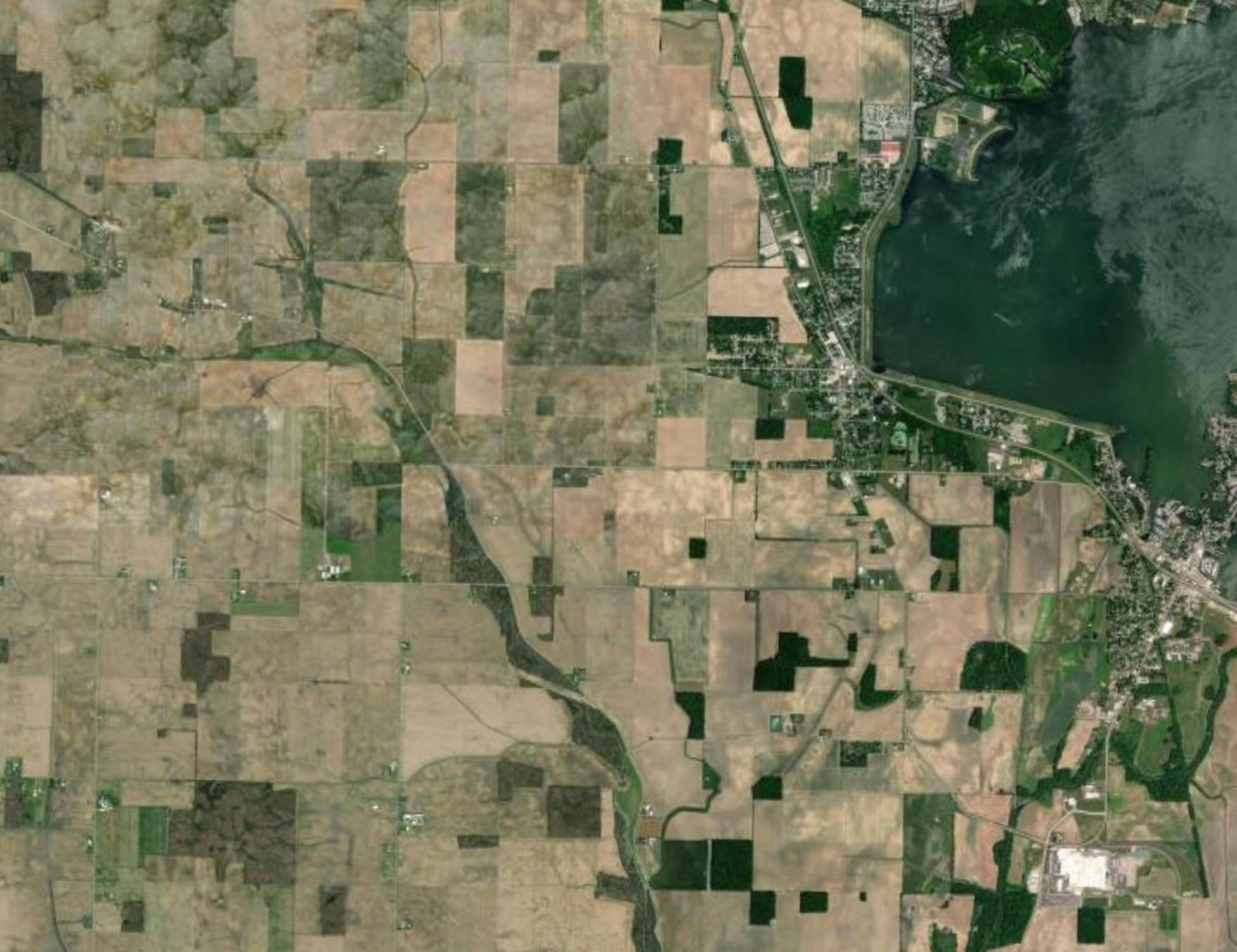






























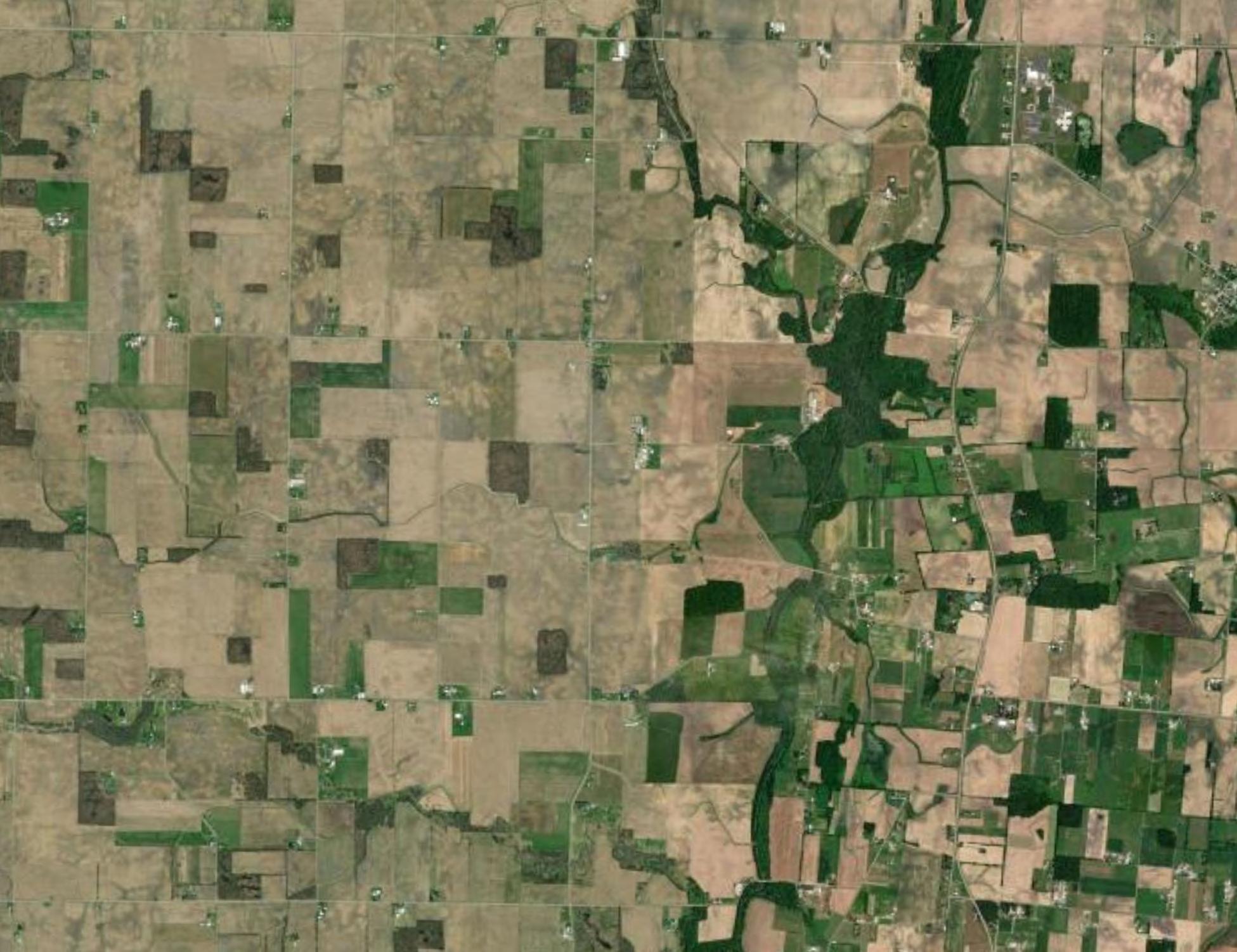
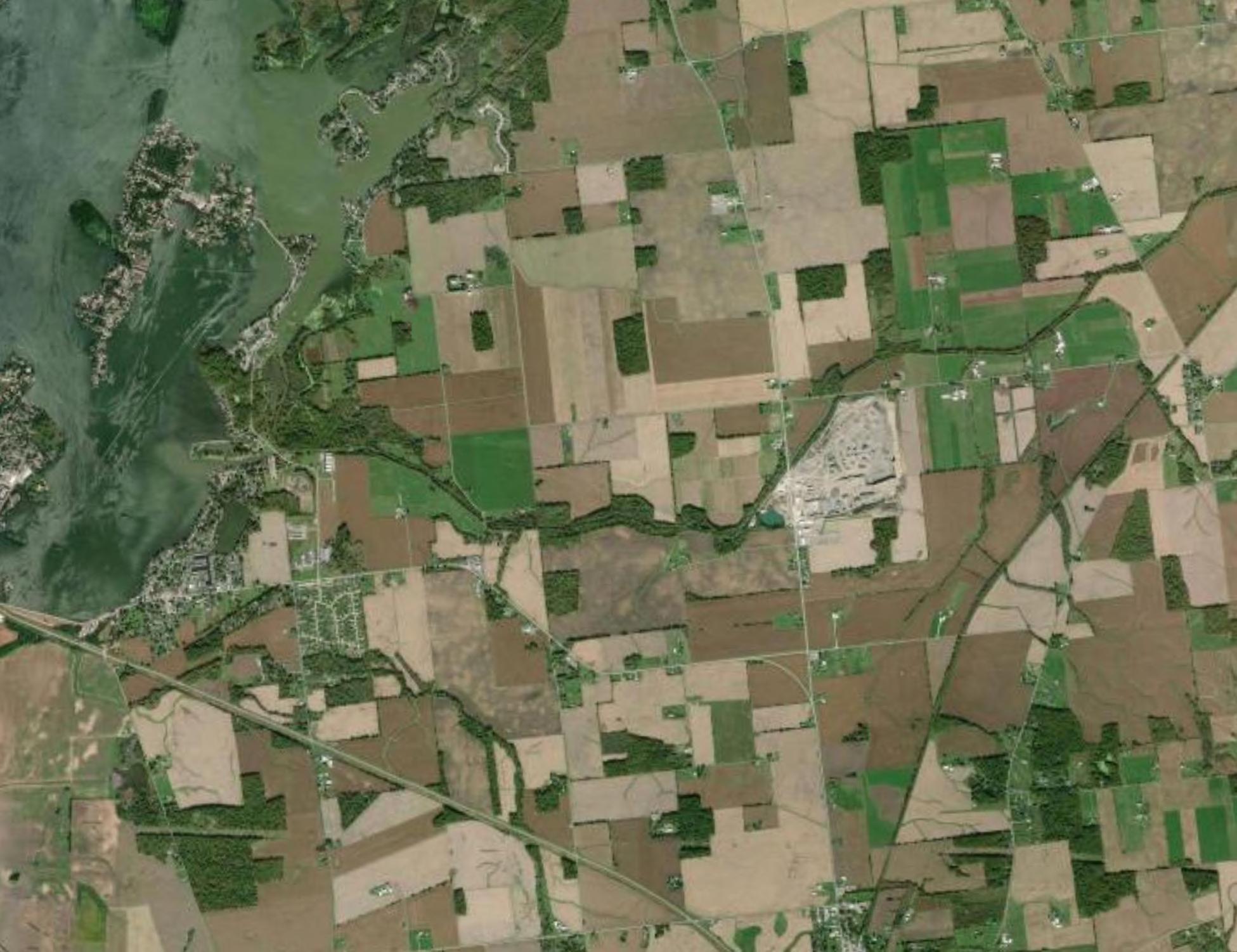




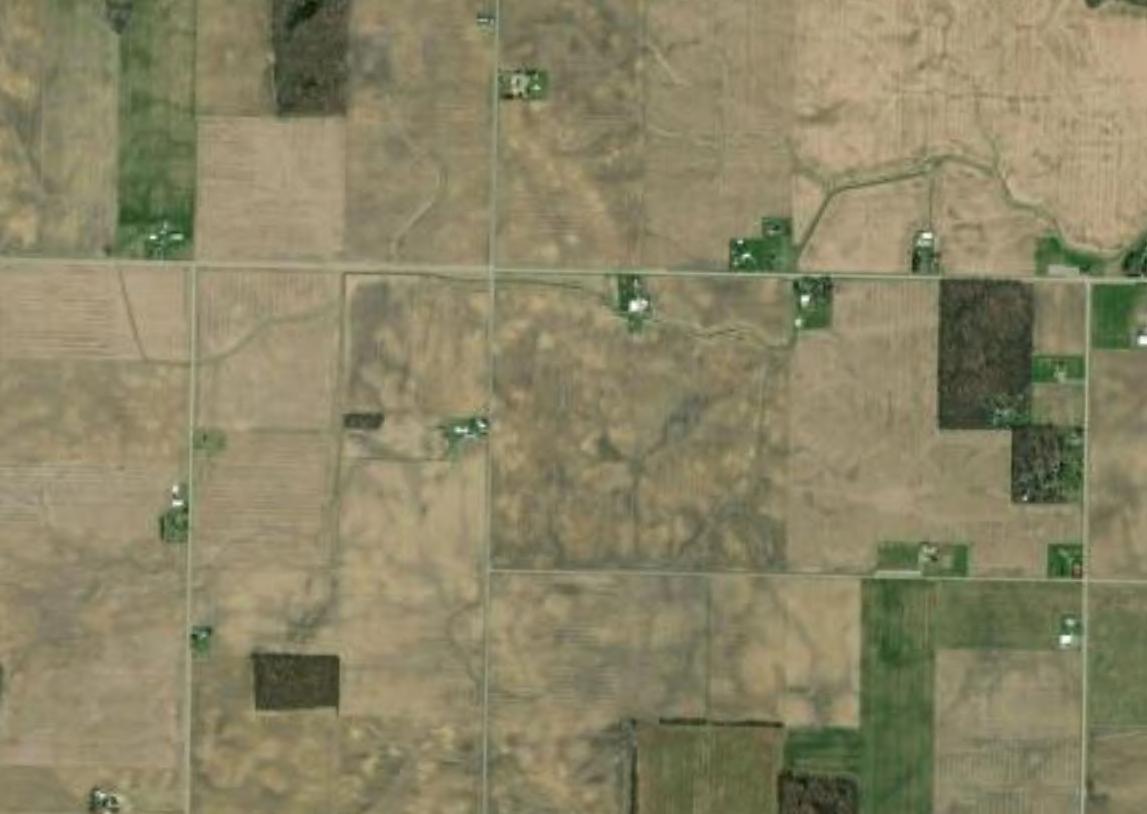























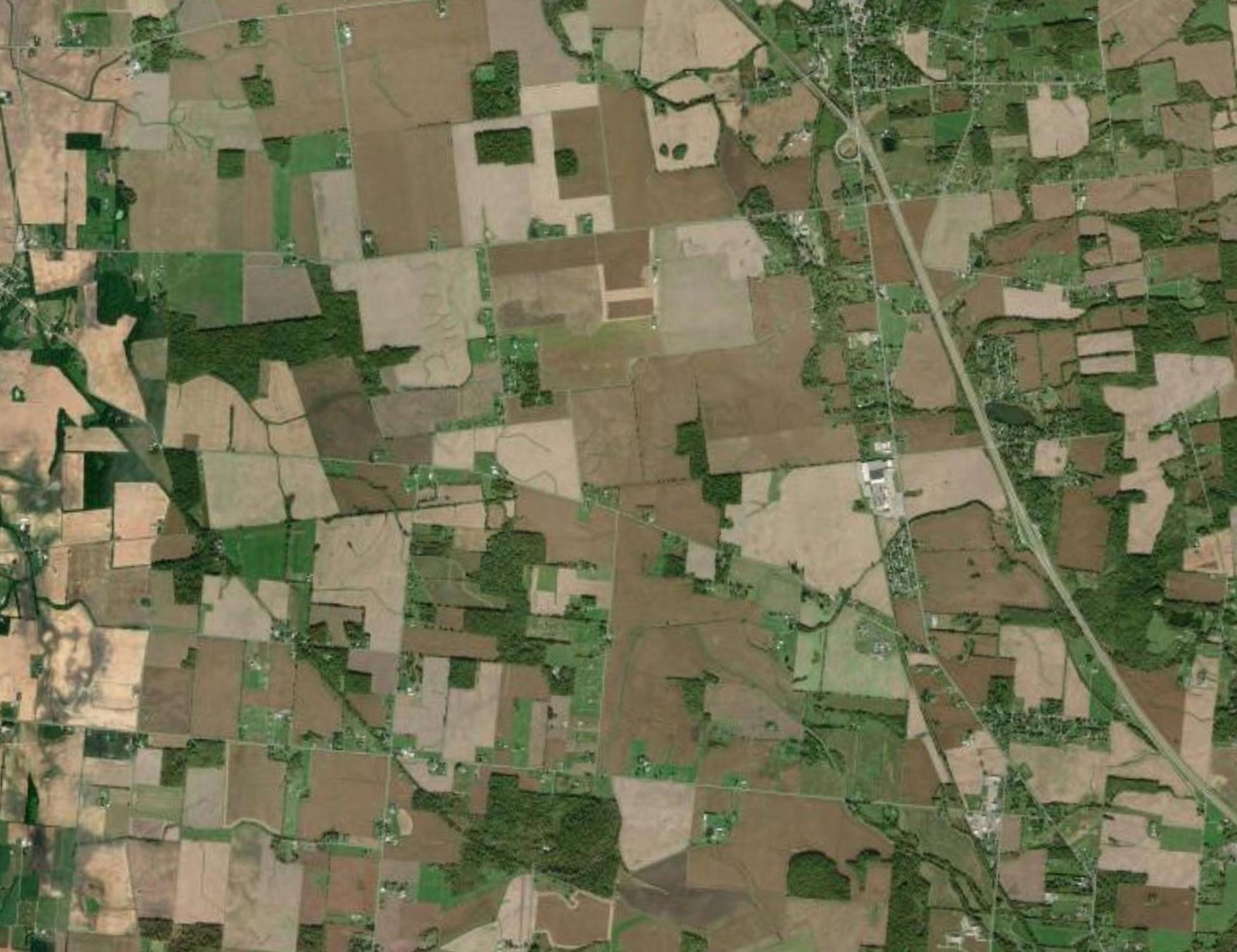




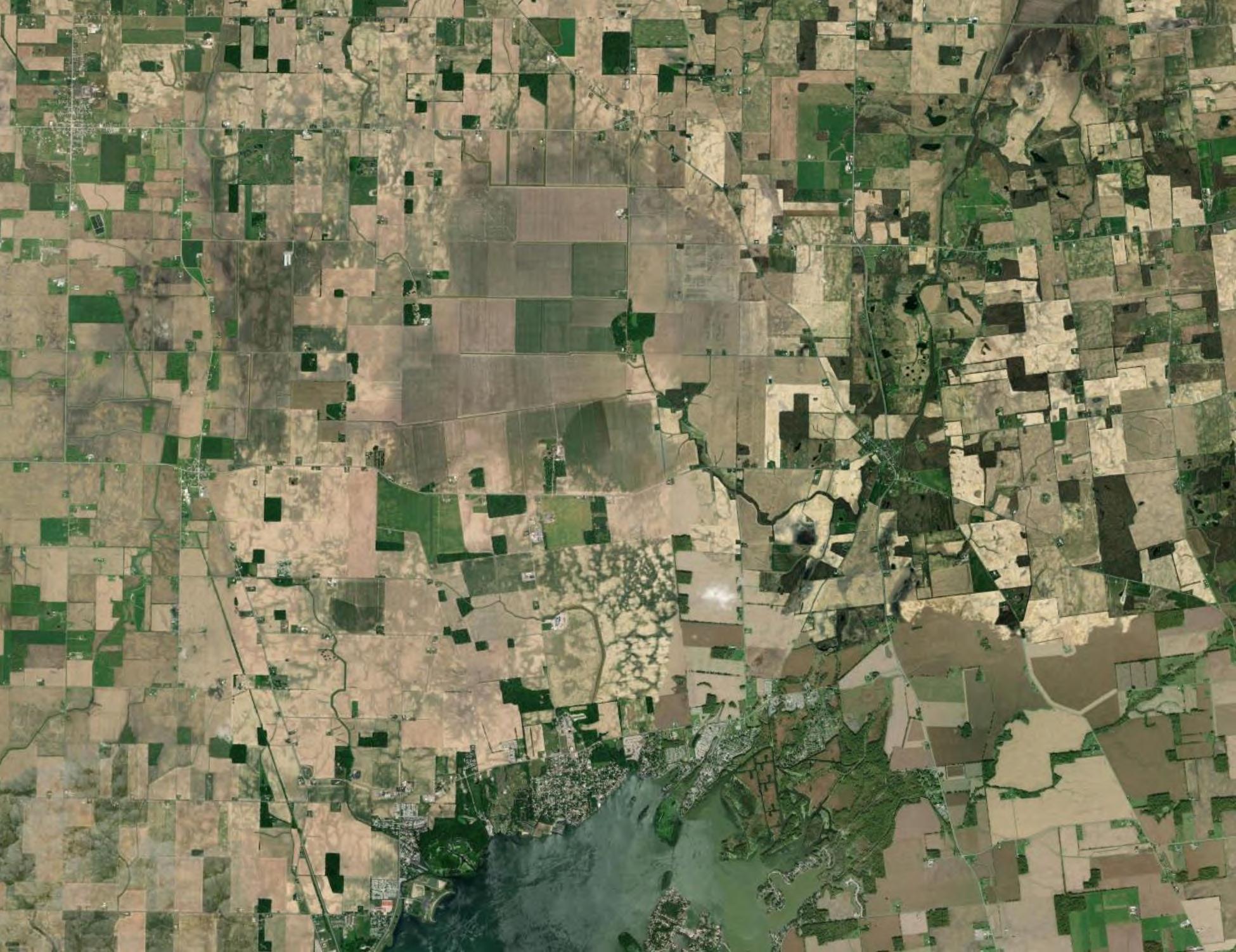
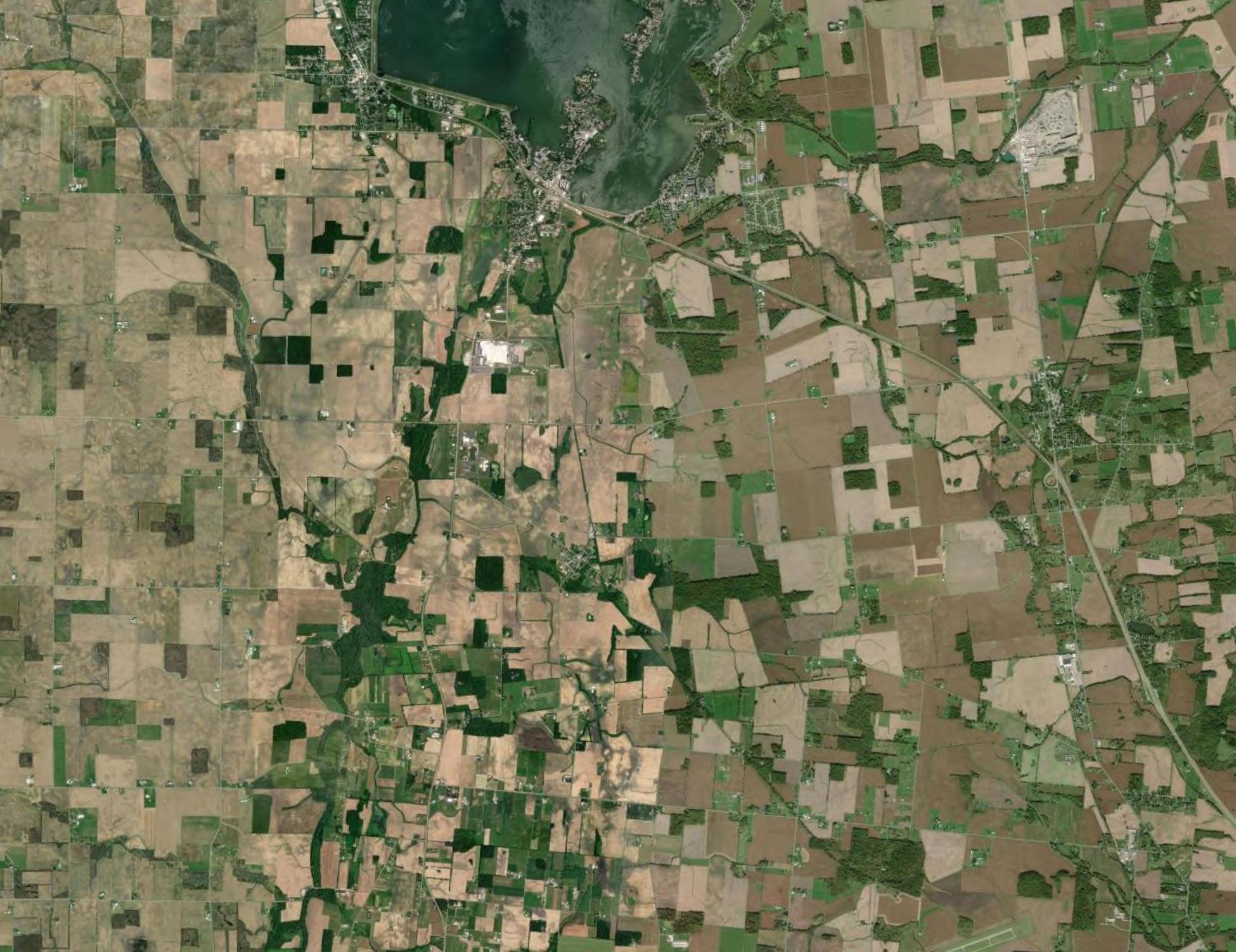


B
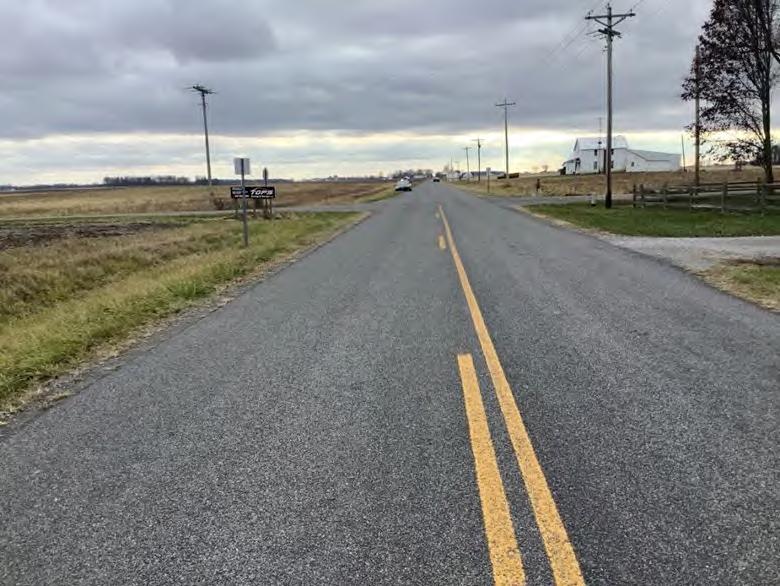


Grange Solar Grazing Center
Route Evaluation Study
Roadway Photographs
Date Taken:
December 2023
Project Number: 15770
File Name:
Logan County, Ohio 15770.0001.XLSX
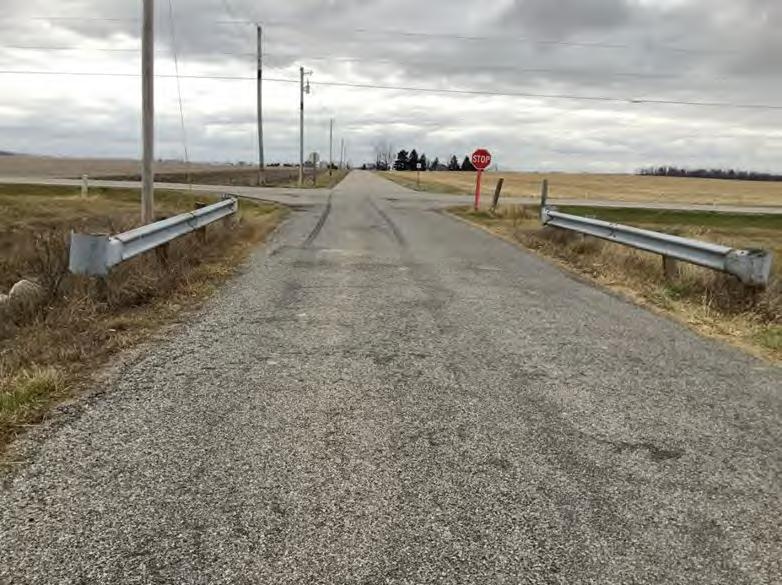
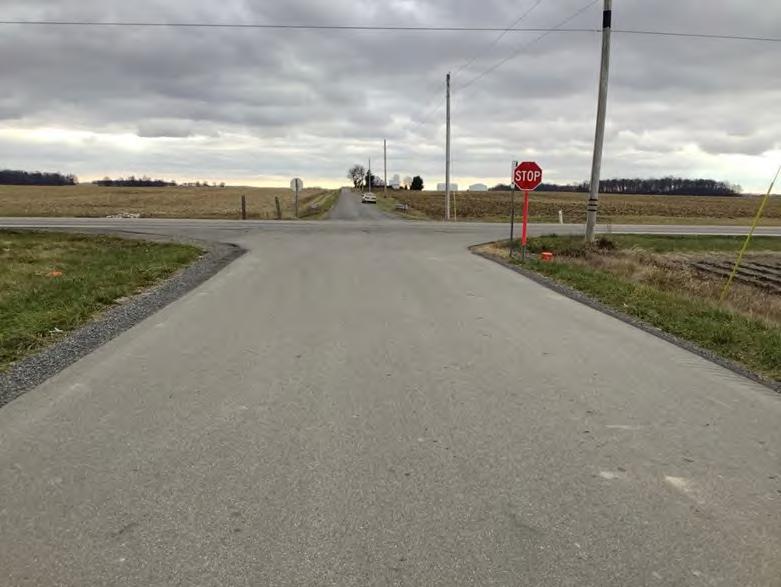

Grange Solar Grazing Center
Route Evaluation Study
Roadway Photographs
Logan County, Ohio
Date Taken:
December 2023
Project Number: 15770
File Name:
15770.0001.XLSX
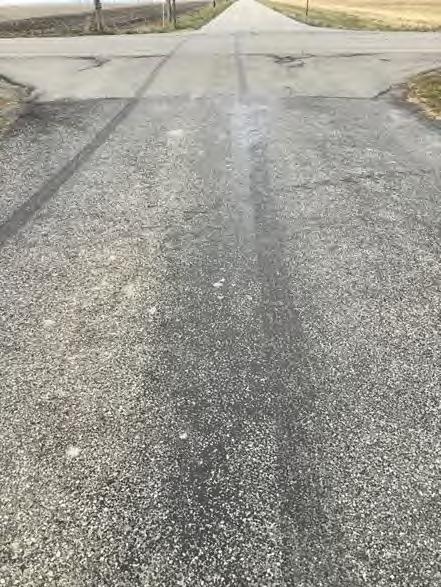
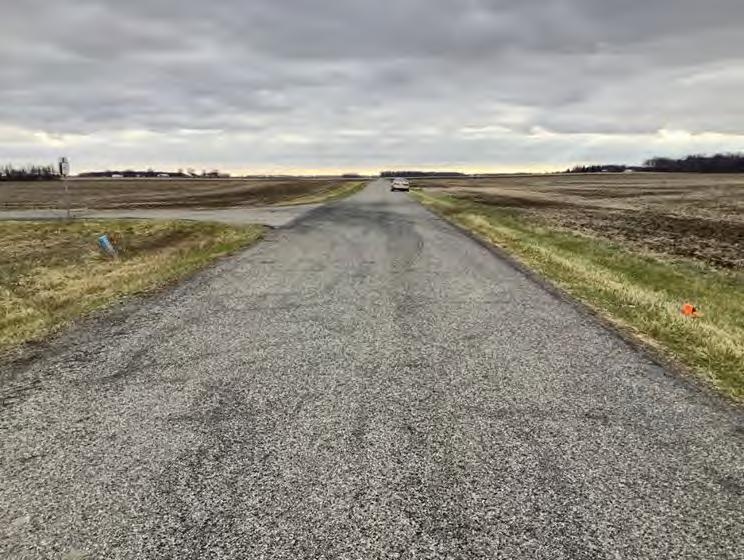

Grange Solar Grazing Center
Route Evaluation Study
Roadway Photographs
Logan County, Ohio
Date Taken:
December 2023
Project Number: 15770
File Name:
15770.0001.XLSX
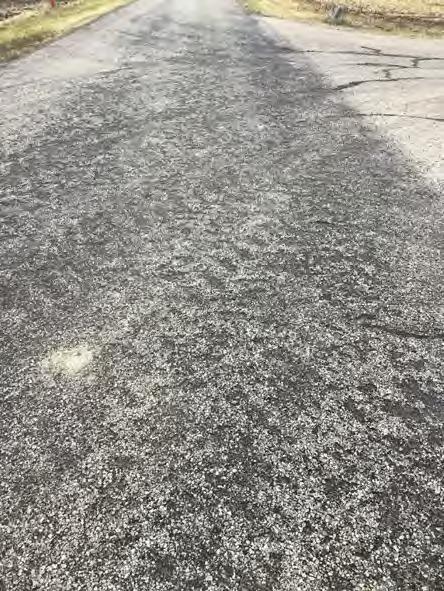
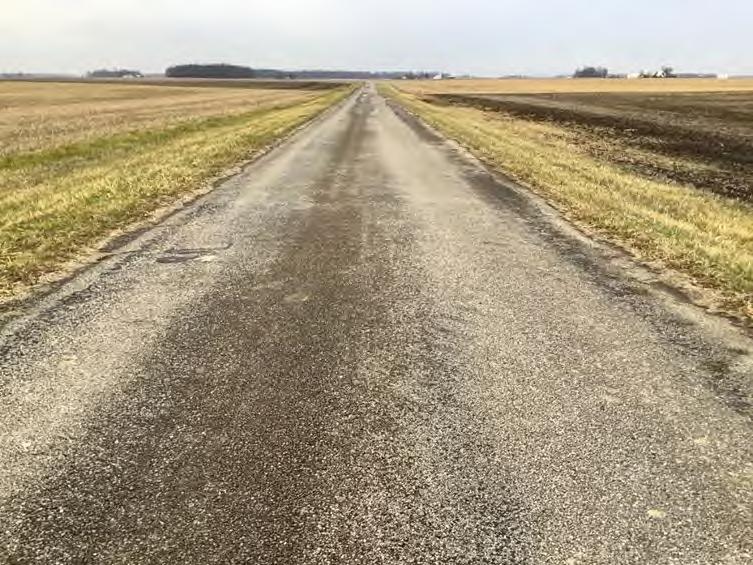

Grange Solar Grazing Center
Route Evaluation Study
Roadway Photographs
Logan County, Ohio
Date Taken:
December 2023
Project Number: 15770
File Name:
15770.0001.XLSX
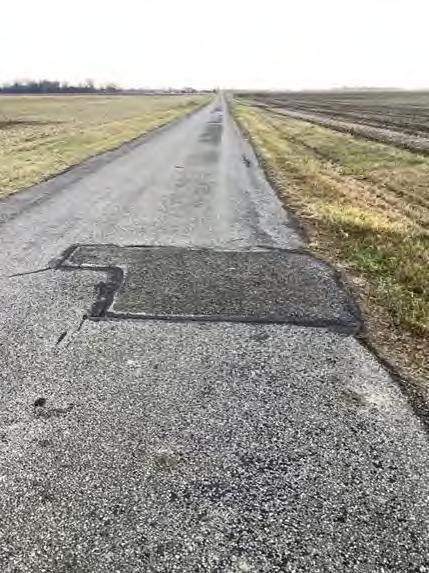
9: Pavement distress (patching) on TWP-80, looking west.
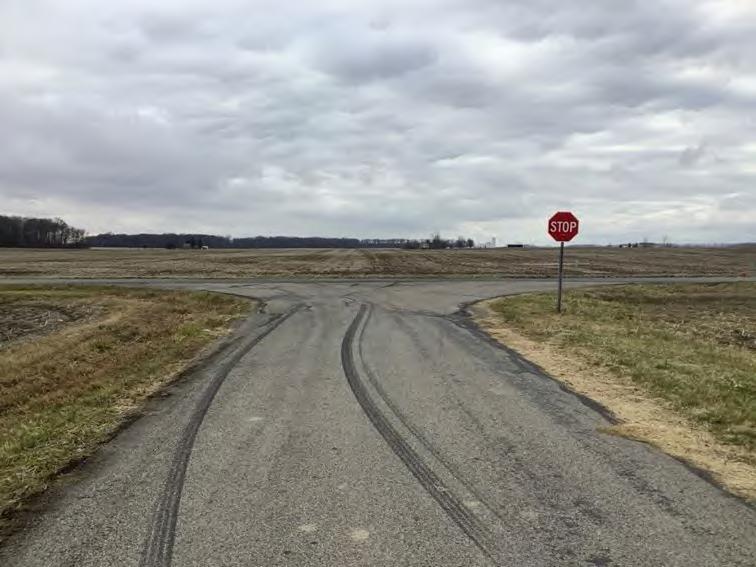
10: Intersection of CR-53 and TWP-80 , looking west.
Grange Solar Grazing Center
Route Evaluation Study

Roadway Photographs
Logan County, Ohio
Date Taken:
December 2023
Project Number: 15770
File Name:
15770.0001.XLSX

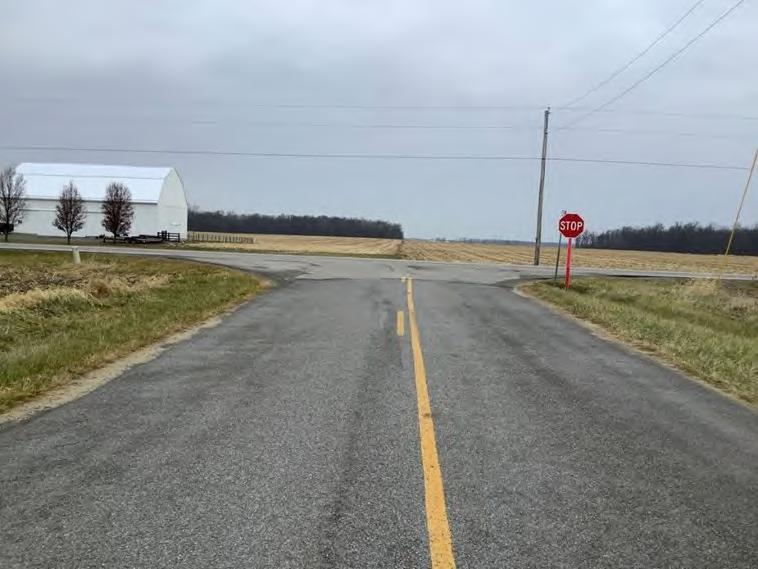

Grange Solar Grazing Center
Route Evaluation Study
Roadway Photographs
Logan County, Ohio
Date Taken:
December 2023
Project Number: 15770
File Name:
15770.0001.XLSX

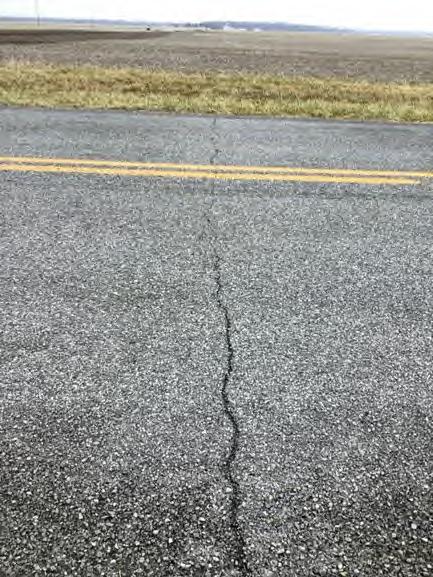
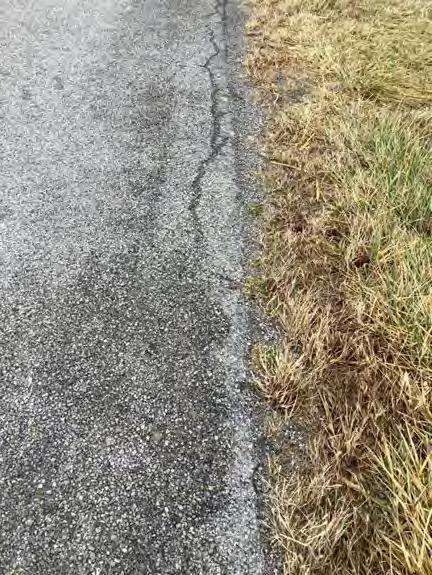
Grange Solar Grazing Center
Route Evaluation Study
Roadway Photographs
Logan County, Ohio
Date Taken:
Project Number: 15770
File Name: December 2023
15770.0001.XLSX
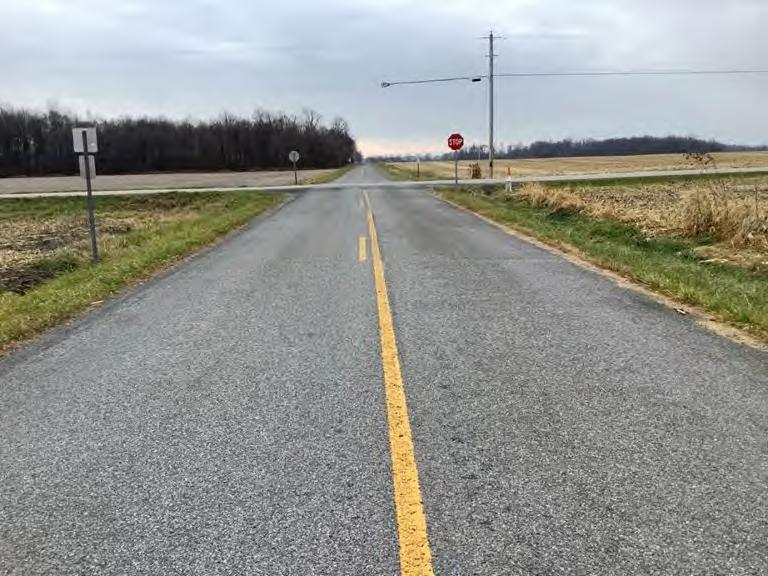
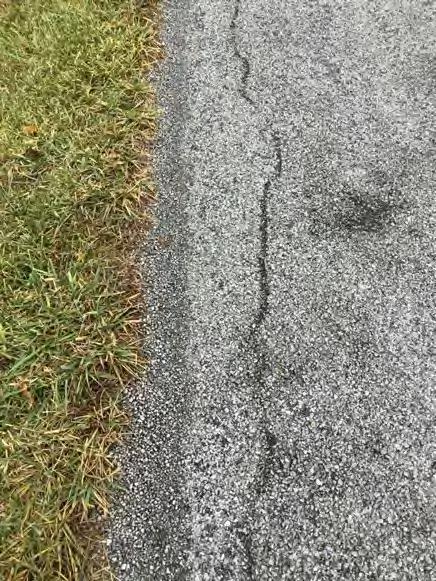

Date Taken:
Grange Solar Grazing Center
Roadway Photographs
Route Evaluation Study Logan County, Ohio 15770.0001.XLSX
December 2023
Project Number: 15770
File Name:
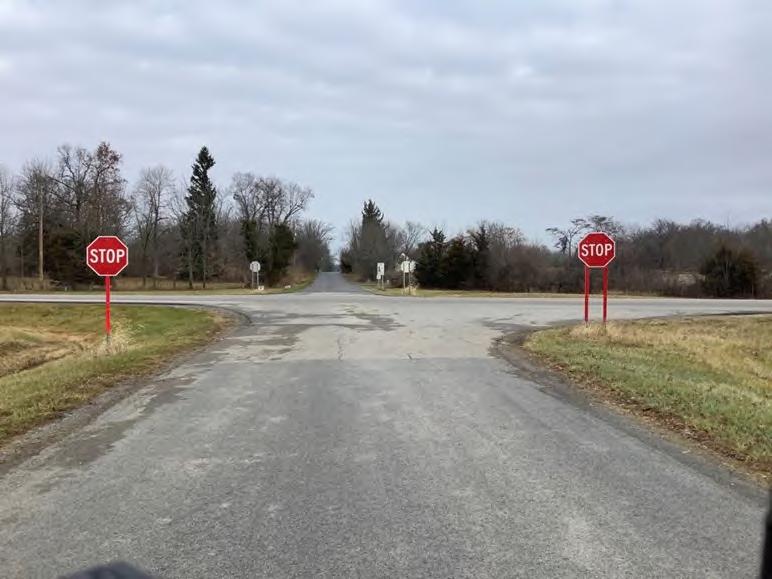
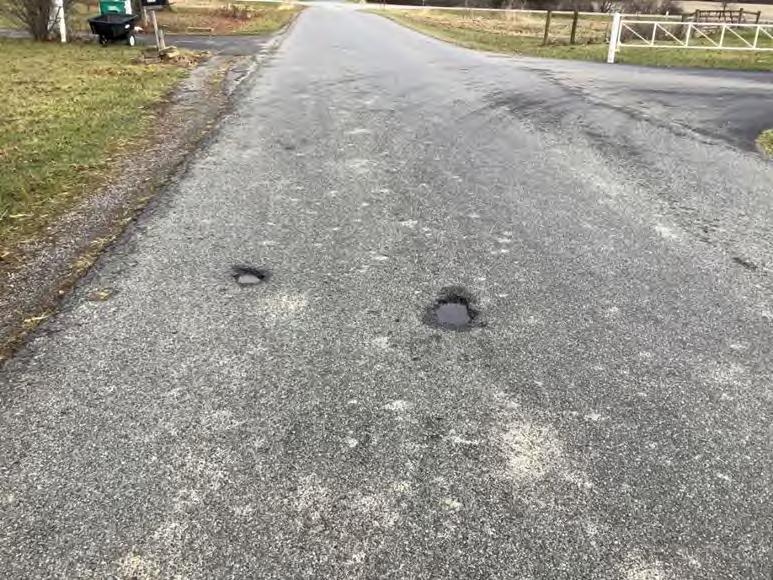

Grange Solar Grazing Center
Route Evaluation Study
Roadway Photographs
Date Taken:
December 2023
Project Number: 15770
File Name: Logan County, Ohio
15770.0001.XLSX
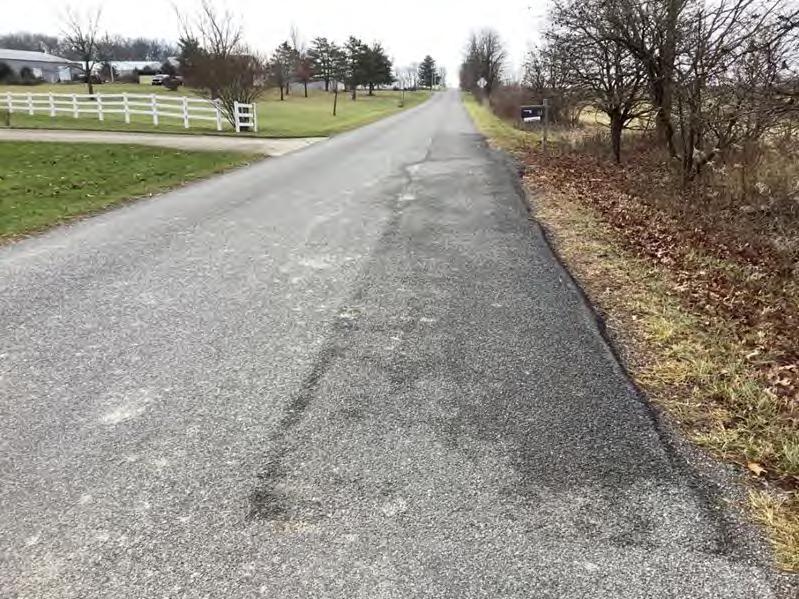
19: Pavement distress (patch) on TWP-95, looking south.
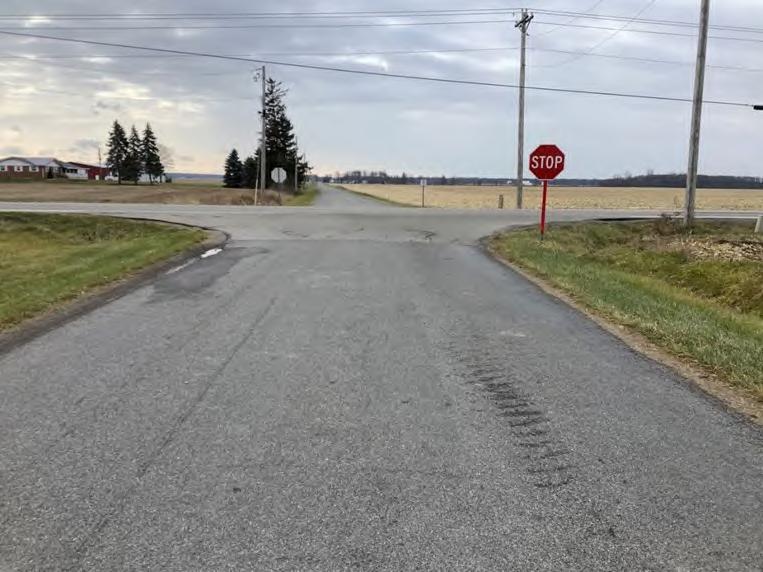
20: Intersection of TWP-95 and SR-274 looking south.
Grange Solar Grazing Center
Route Evaluation Study

Date Taken:
December 2023
Project Number: 15770
File Name: Logan County, Ohio 15770.0001.XLSX
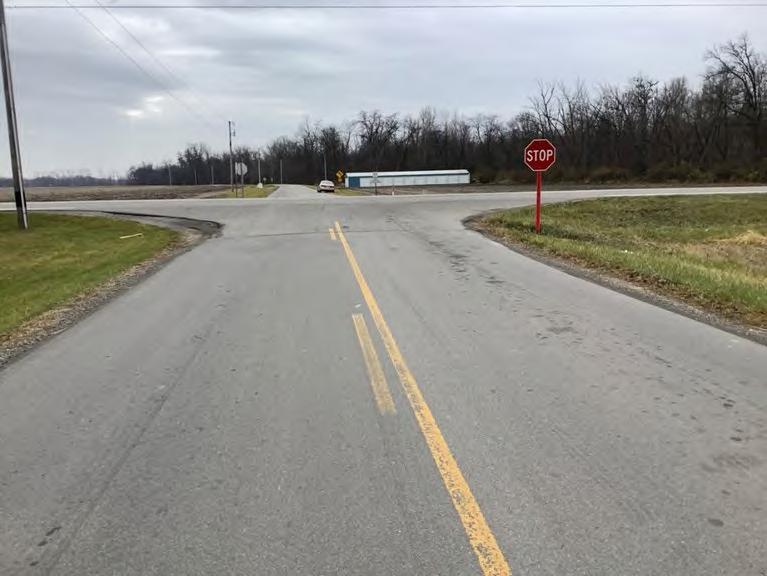
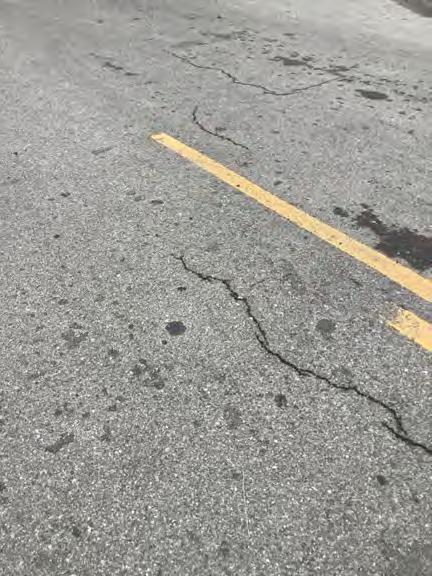

Grange Solar Grazing Center
Route Evaluation Study
Roadway Photographs
Logan County, Ohio
Date Taken:
December 2023
Project Number: 15770
File Name:
15770.0001.XLSX
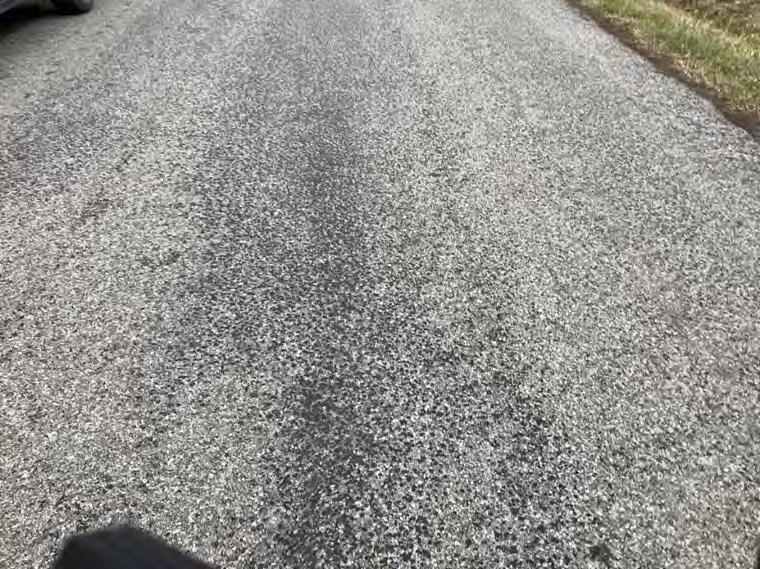
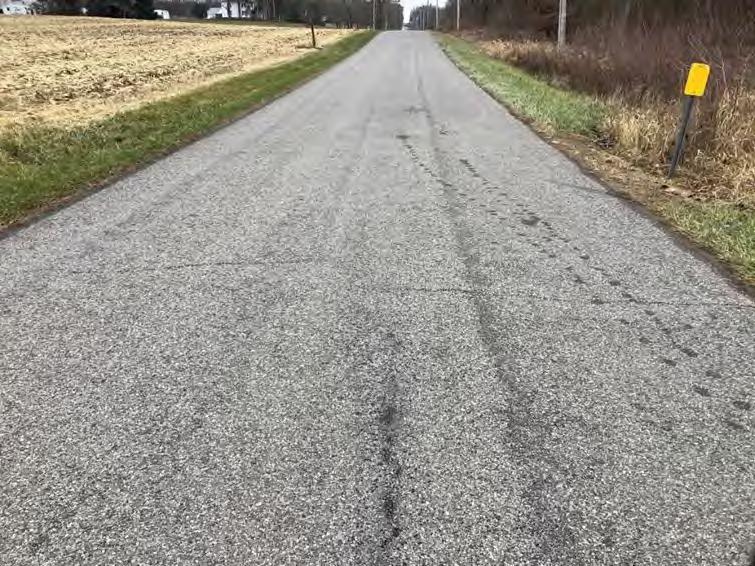

Grange Solar Grazing Center
Route Evaluation Study
Roadway Photographs
Date Taken:
December 2023
Project Number: 15770
File Name: Logan County, Ohio
15770.0001.XLSX
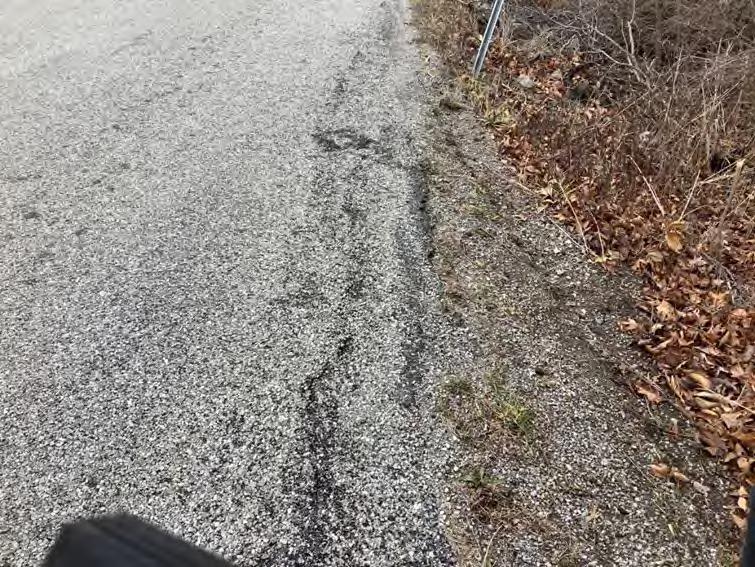


Grange Solar Grazing Center
Route Evaluation Study
Roadway Photographs
Date Taken:
December 2023
Project Number: 15770
File Name: Logan County, Ohio
15770.0001.XLSX
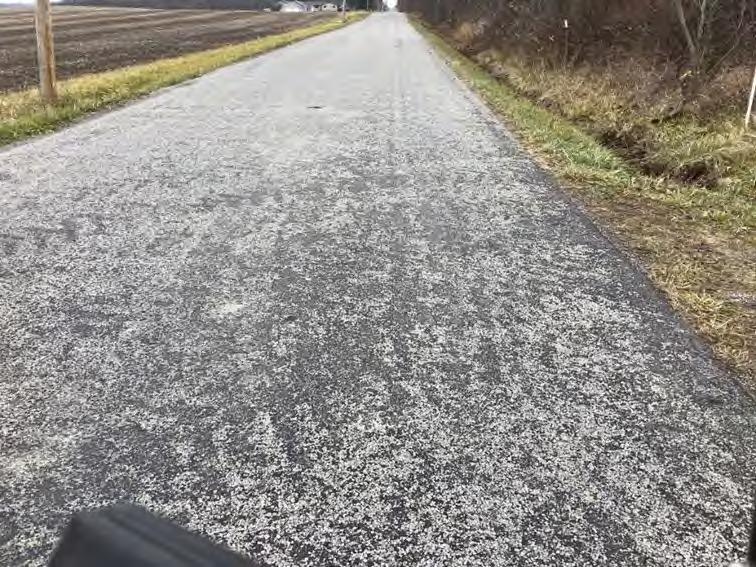
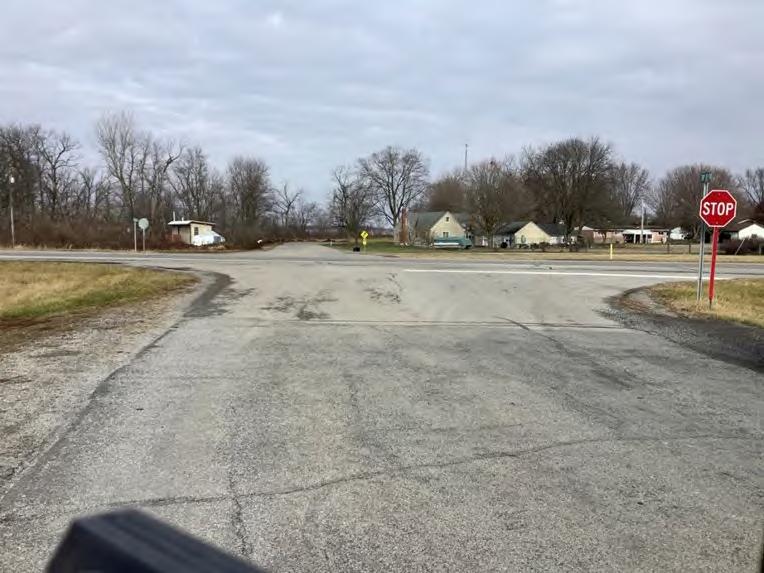

Grange Solar Grazing Center
Route Evaluation Study
Roadway Photographs
Date Taken:
December 2023
Project Number: 15770
File Name: Logan County, Ohio
15770.0001.XLSX
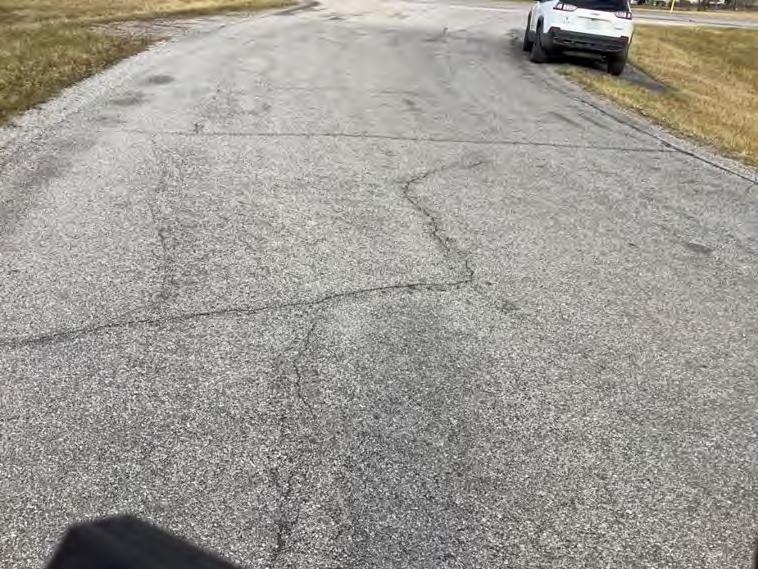


Grange Solar Grazing Center
Route Evaluation Study
Roadway Photographs
Date Taken:
December 2023
Project Number: 15770
File Name: Logan County, Ohio
15770.0001.XLSX



Grange Solar Grazing Center
Route Evaluation Study
Roadway Photographs
Date Taken:
December 2023
Project Number: 15770
File Name: Logan County, Ohio
15770.0001.XLSX
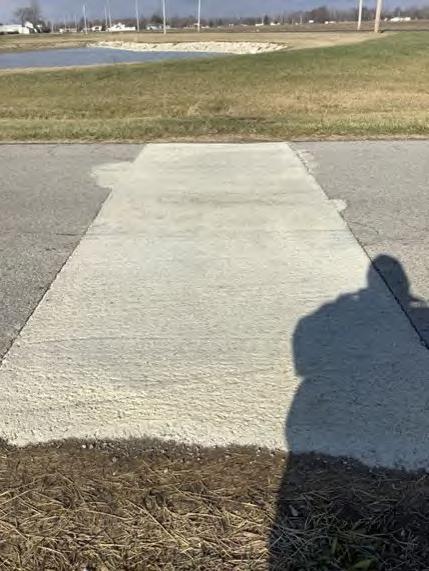
33: Pavement distress (patching) on TWP-52, looking north.
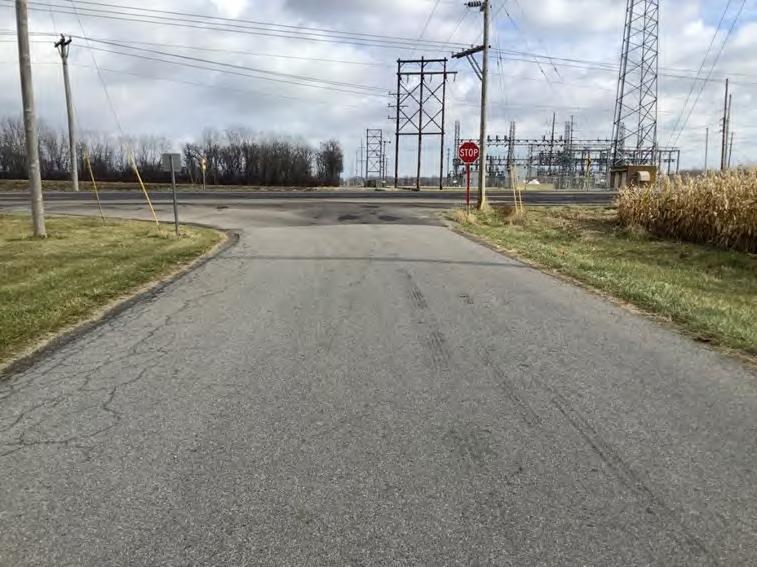
34: Intersection of TWP-53 and SR-235 looking east.
Grange Solar Grazing Center
Route Evaluation Study

Date Taken:
December 2023
Project Number: 15770
File Name: Logan County, Ohio 15770.0001.XLSX
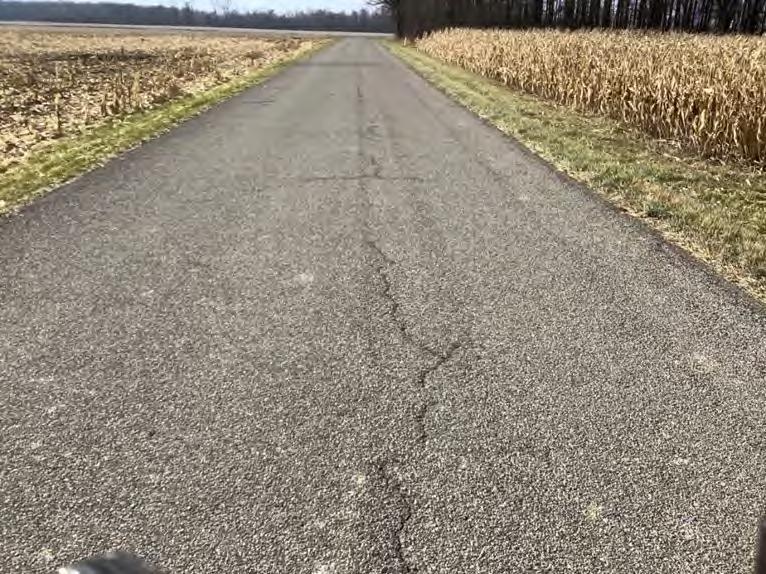


Grange Solar Grazing Center
Route Evaluation Study
Roadway Photographs
Date Taken:
December 2023
Project Number: 15770
File Name: Logan County, Ohio
15770.0001.XLSX

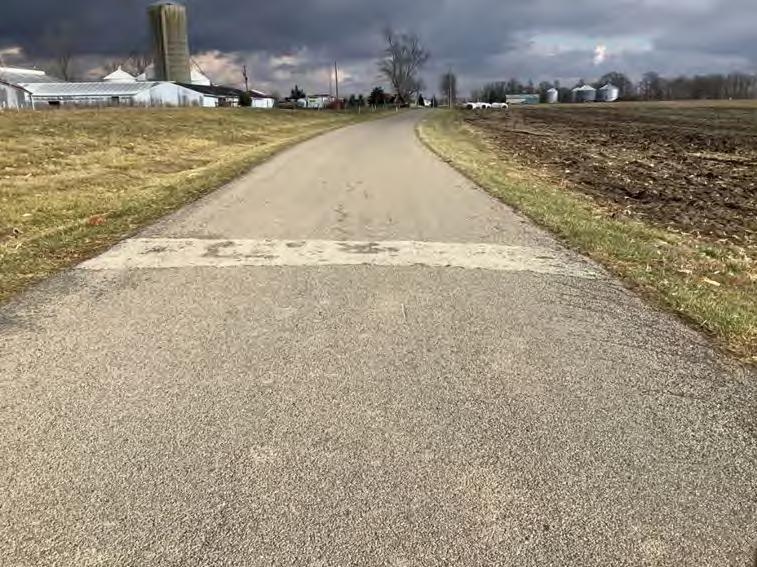

Grange Solar Grazing Center
Route Evaluation Study
Roadway Photographs
Logan County, Ohio
Date Taken:
December 2023
Project Number: 15770
File Name:
15770.0001.XLSX

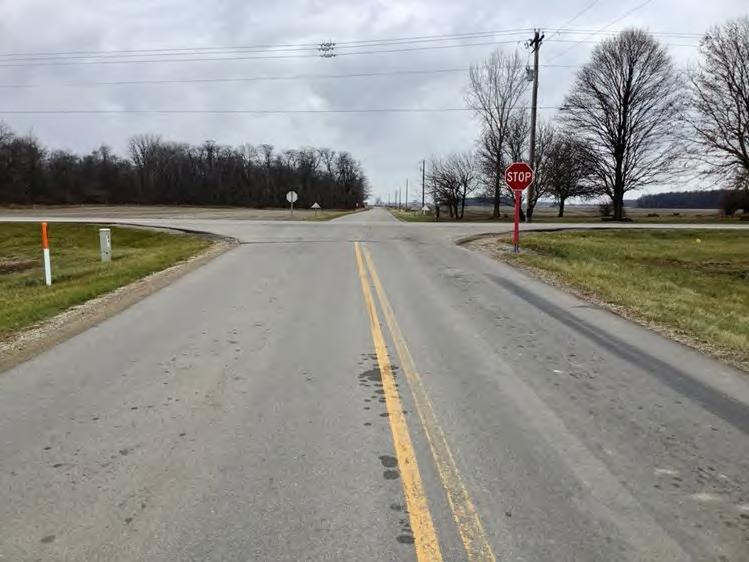

Grange Solar Grazing Center
Route Evaluation Study
Roadway Photographs
Logan County, Ohio
Date Taken:
December 2023
Project Number: 15770
File Name:
15770.0001.XLSX


Route Evaluation Study
Roadway Photographs
Date Taken:
December 2023
Project Number: 15770
File Name:
15770.0000.XLSX